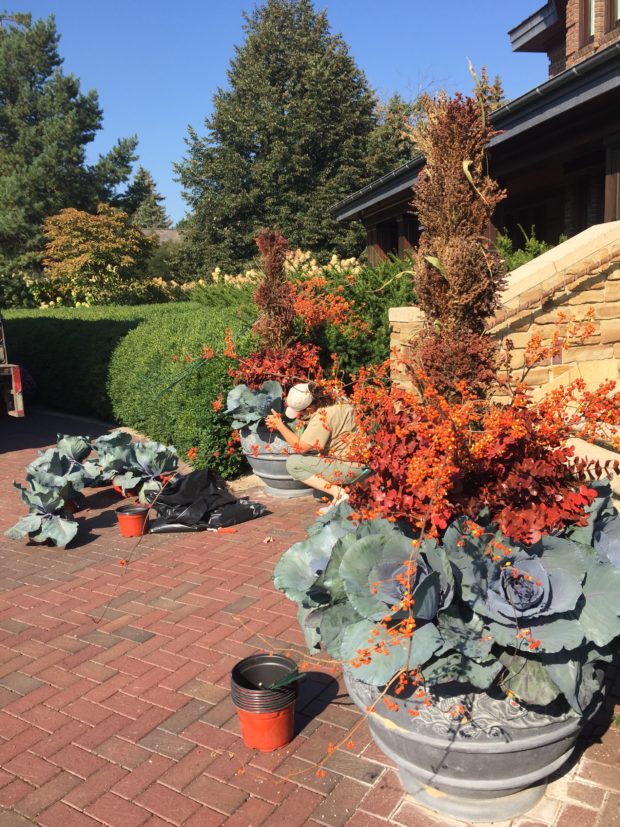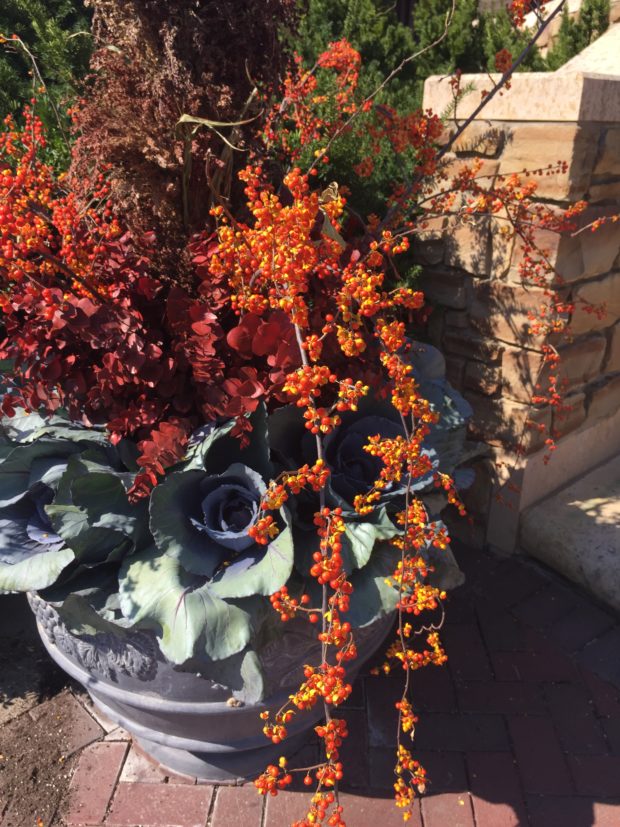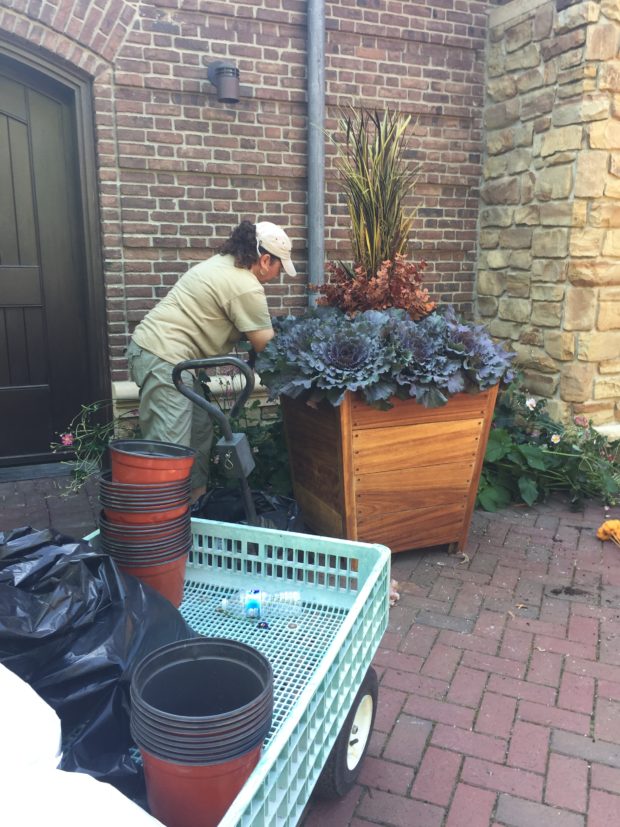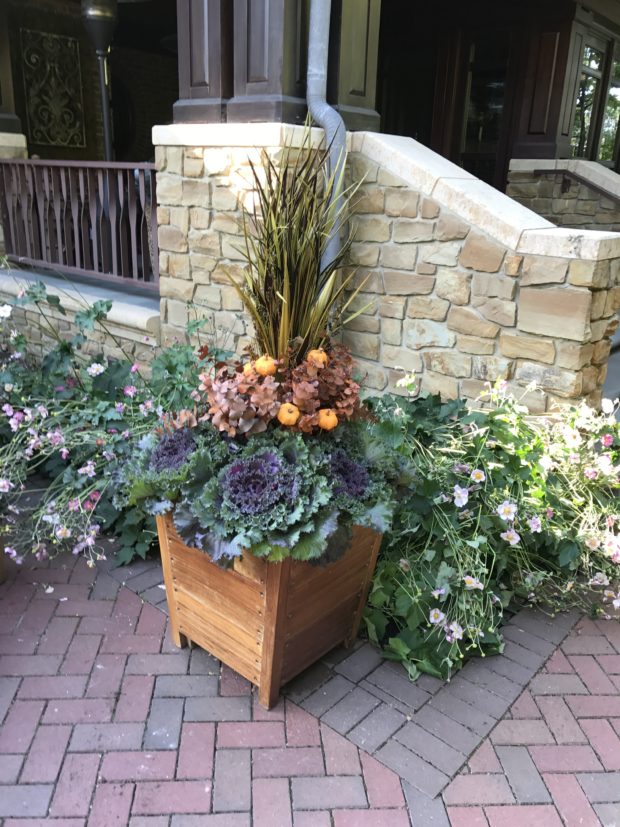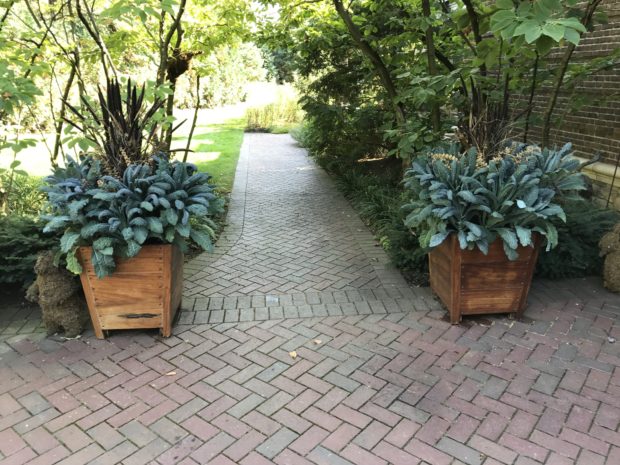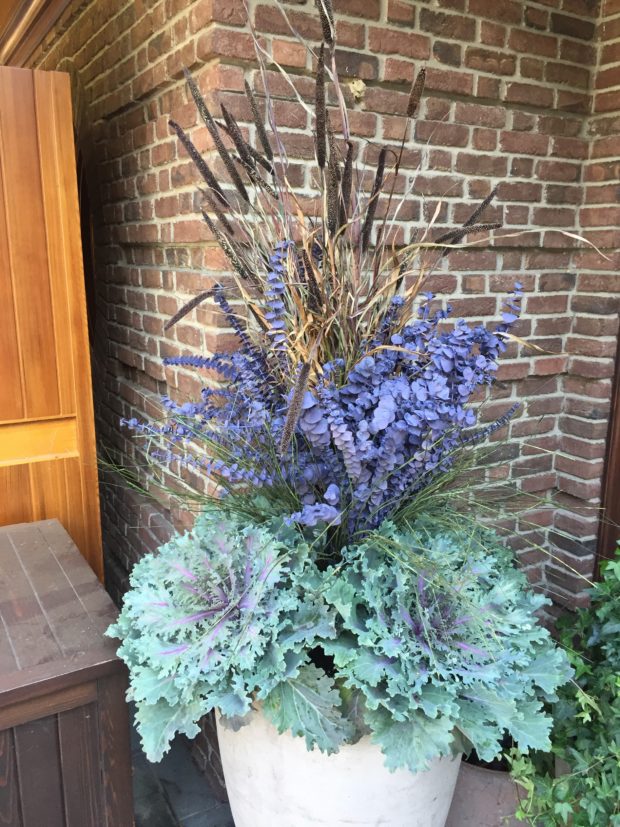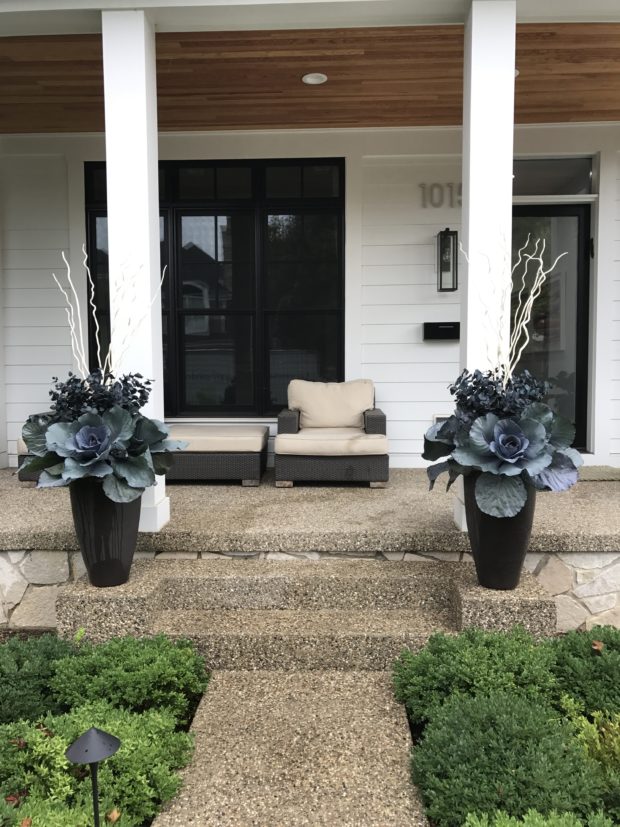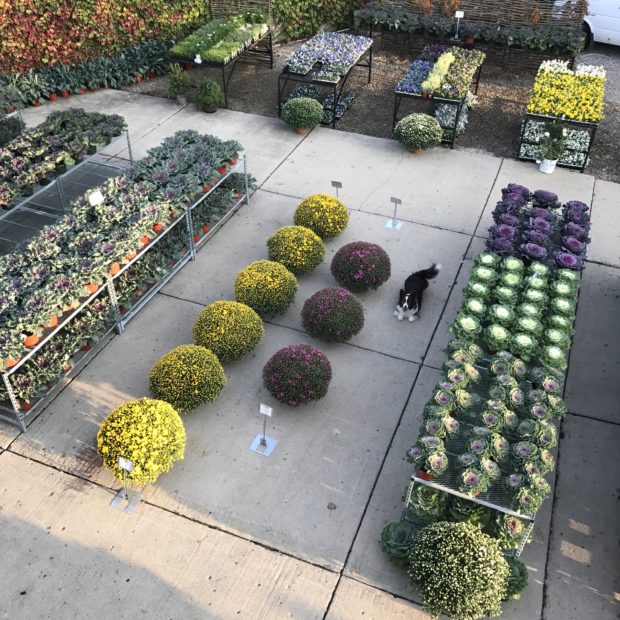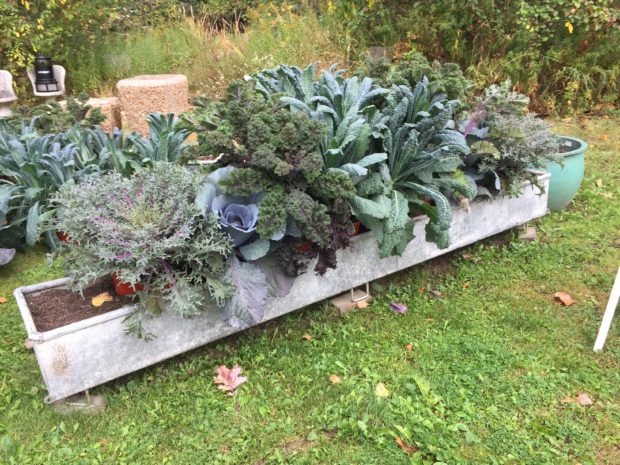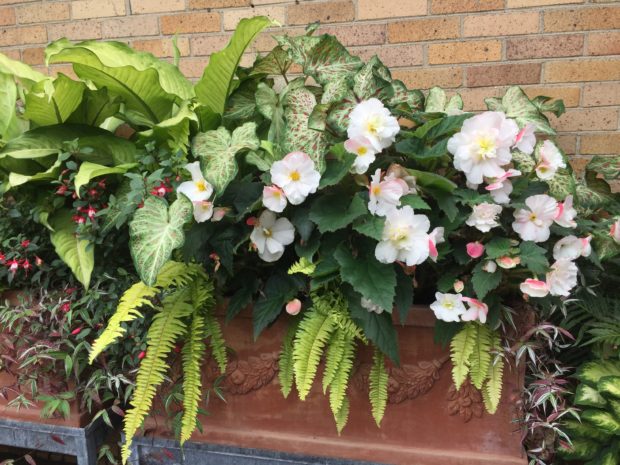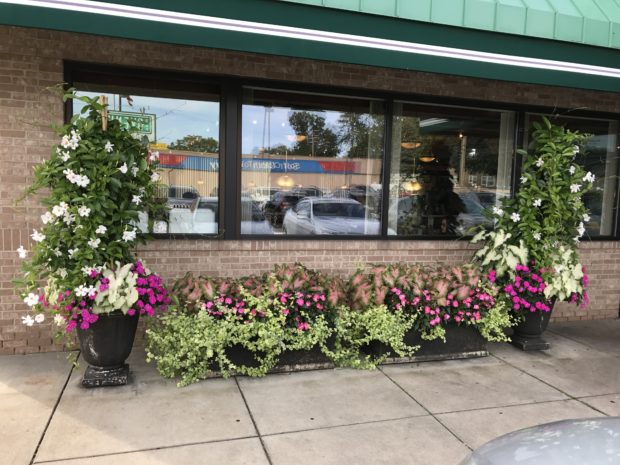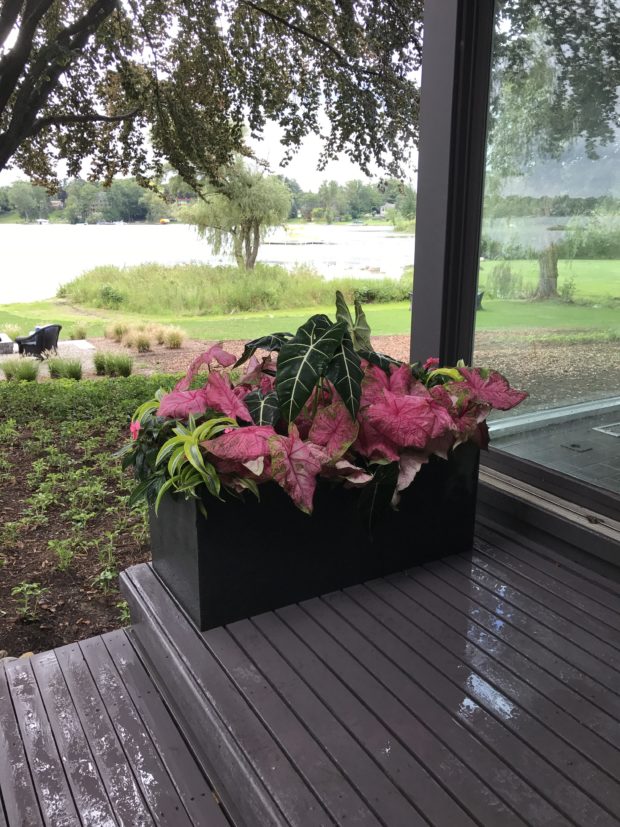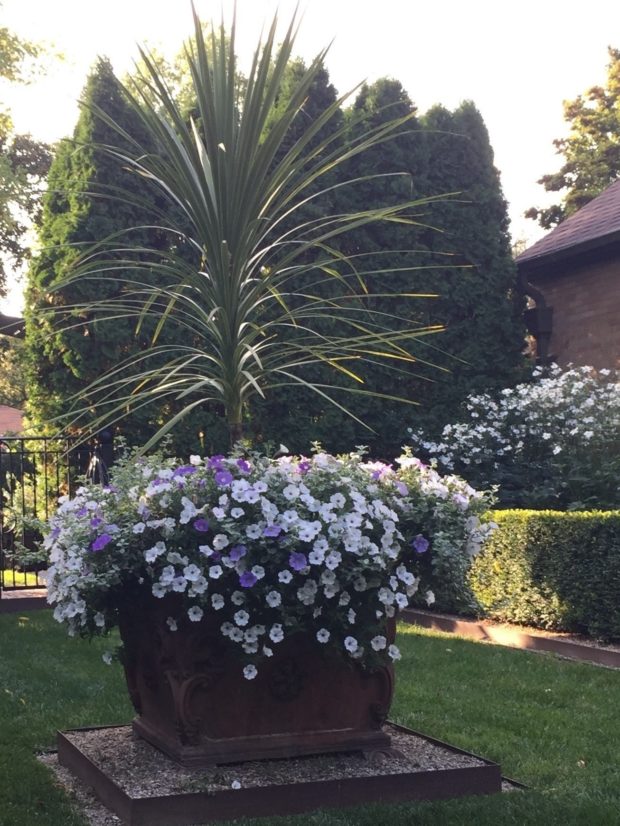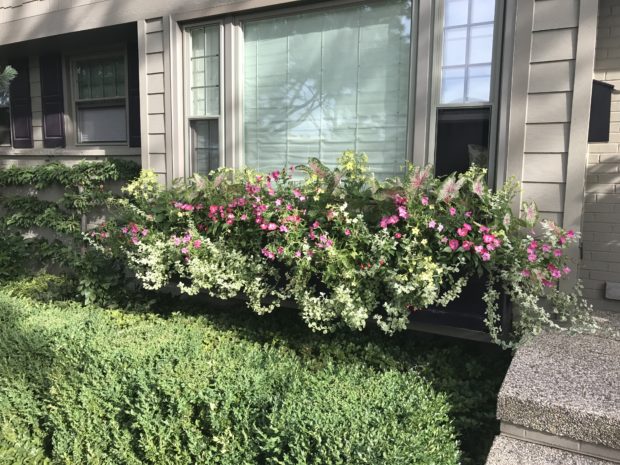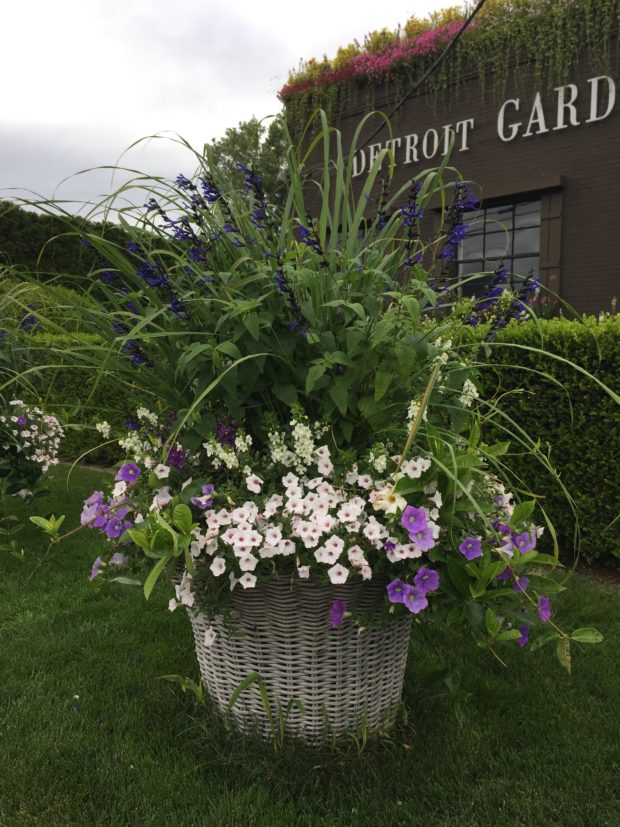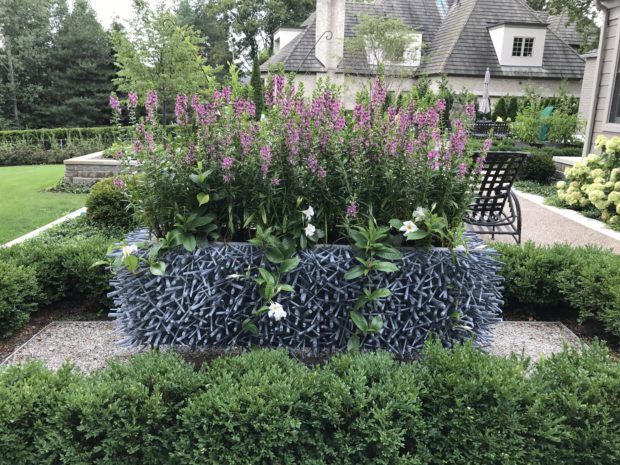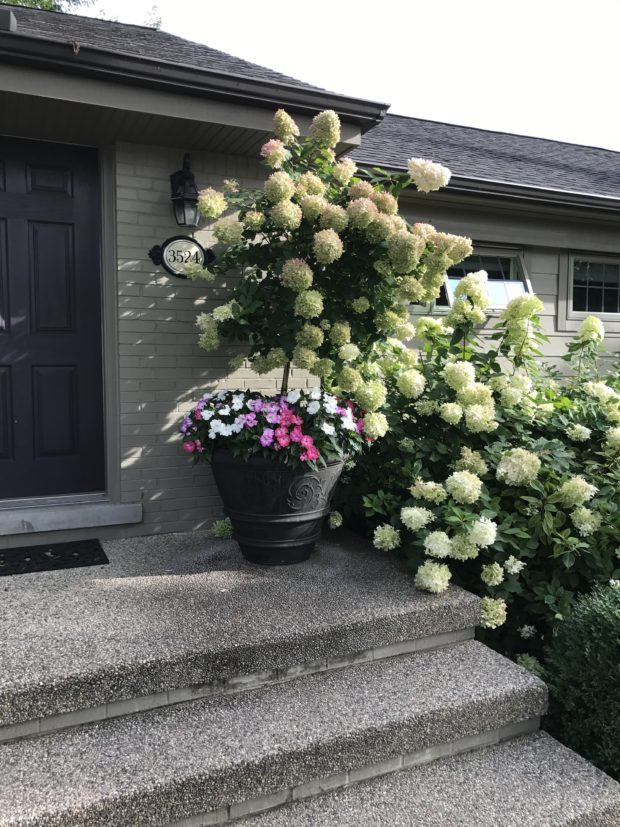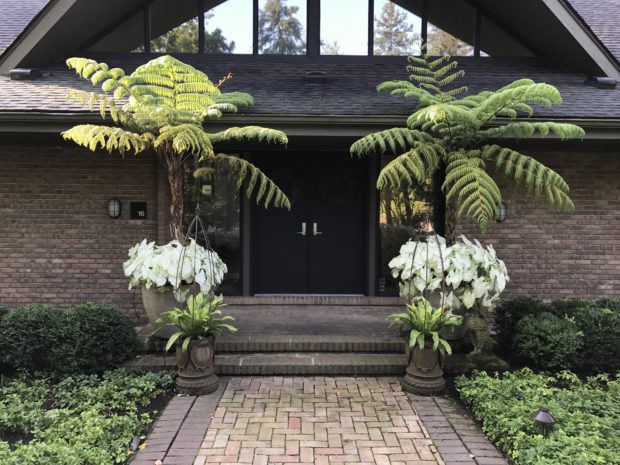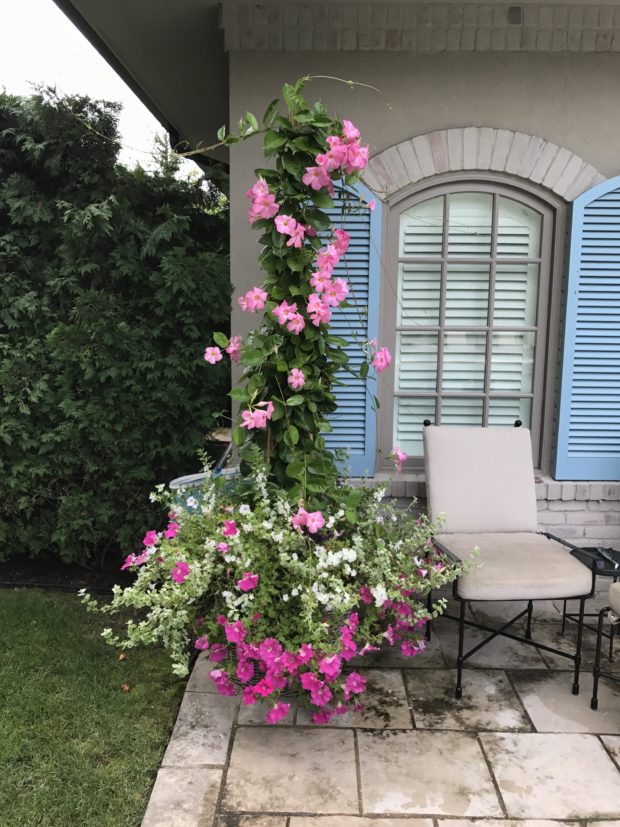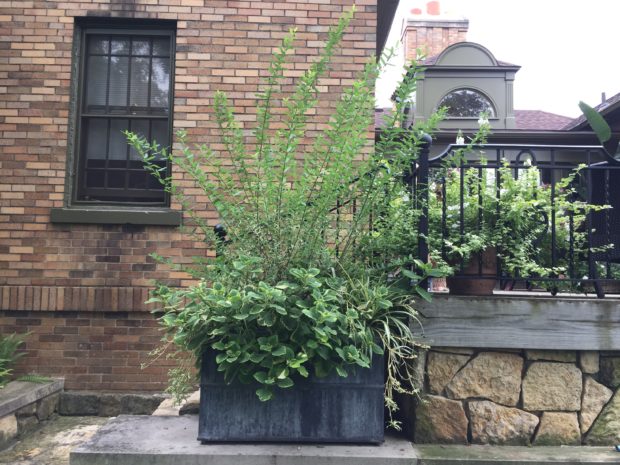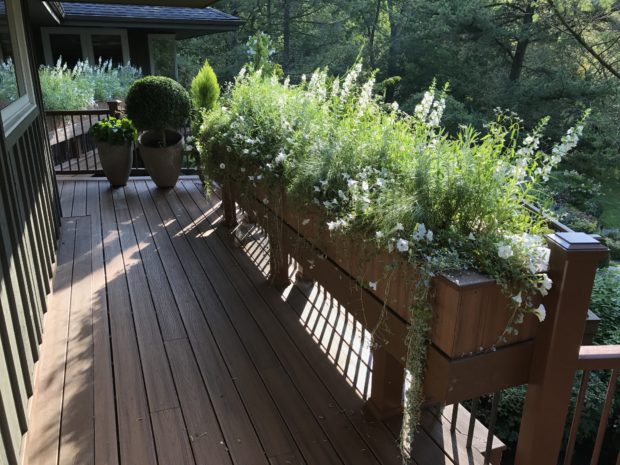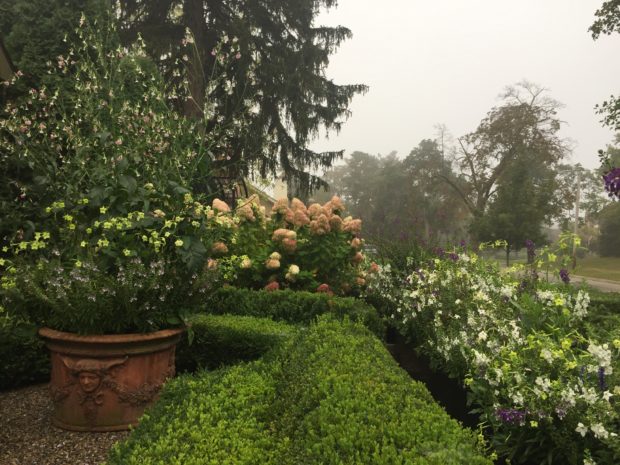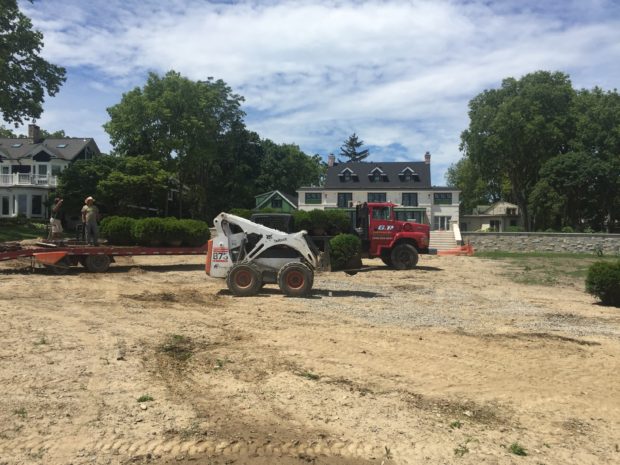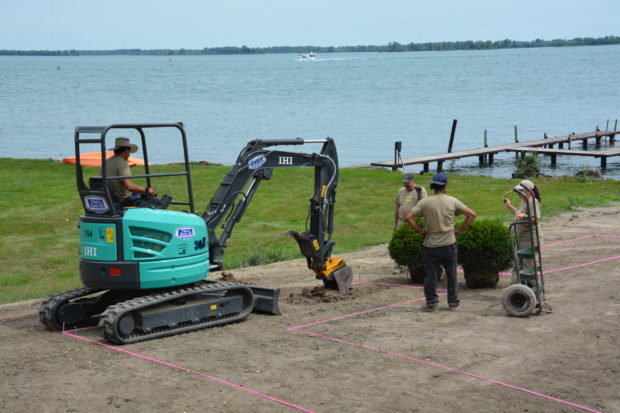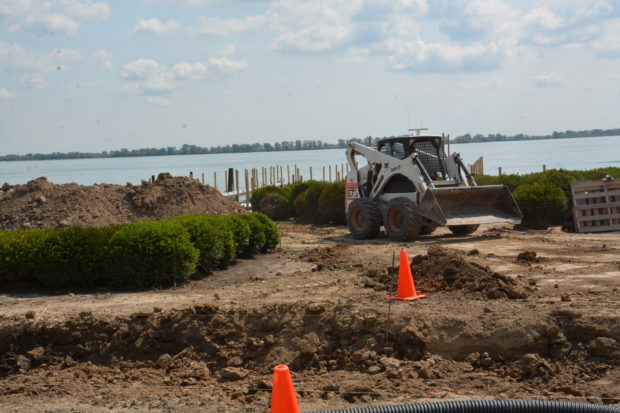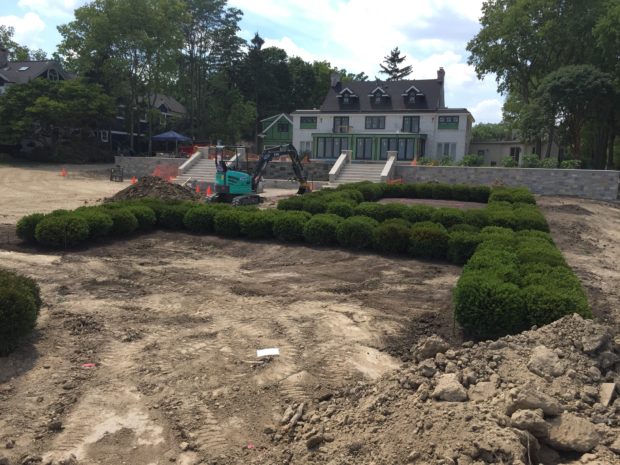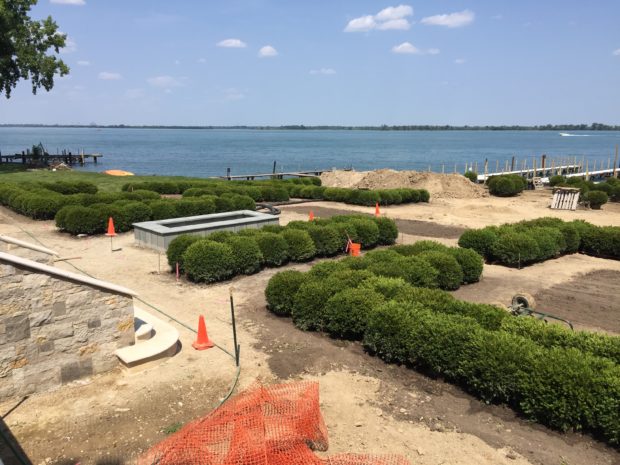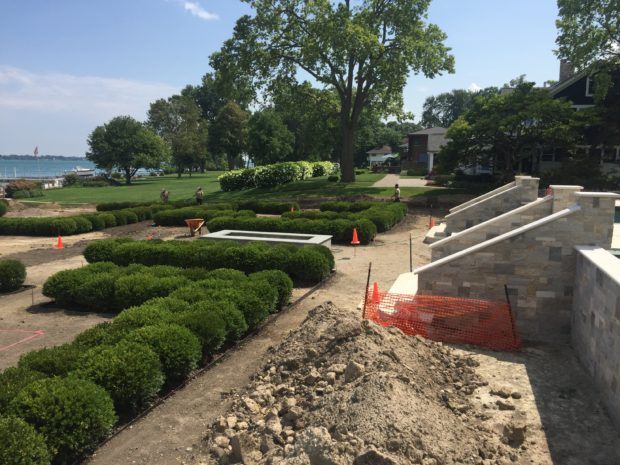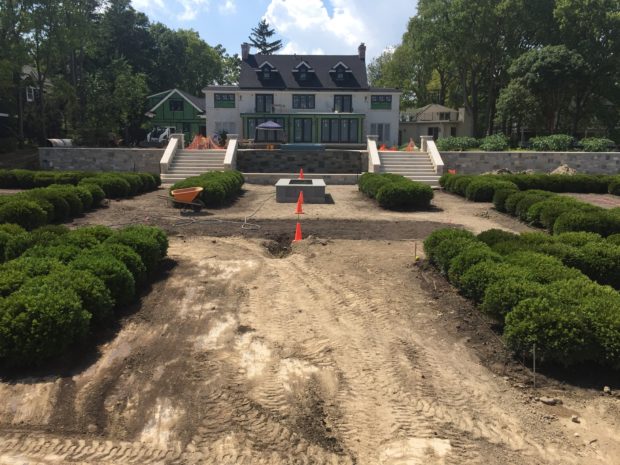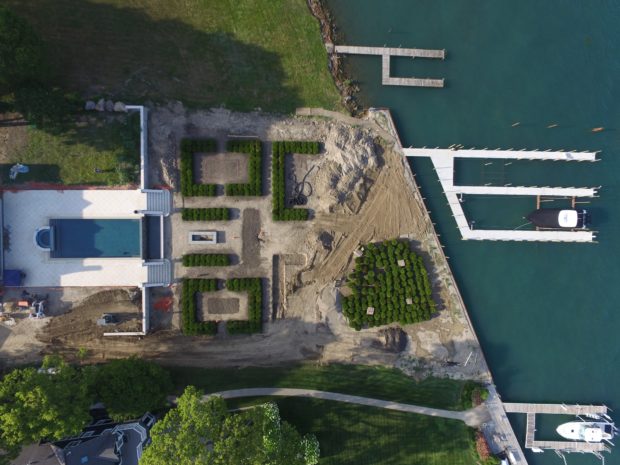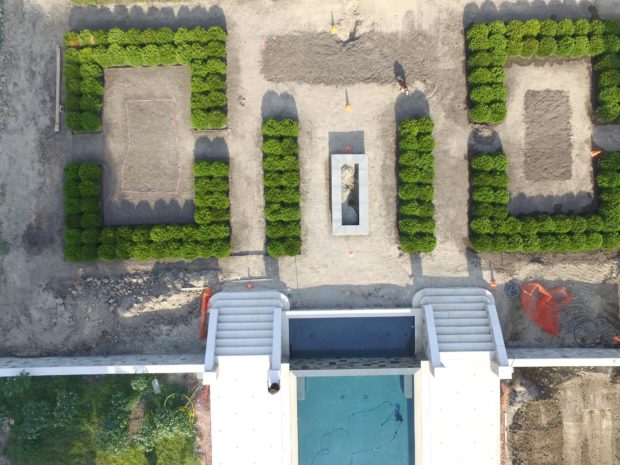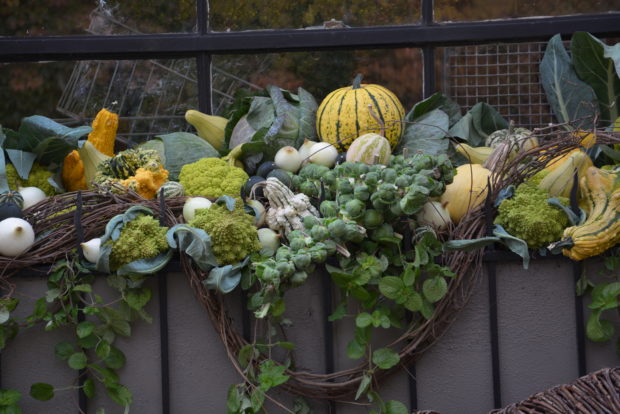 Fall is a favorite season. I like reflecting on all the efforts made in the garden imagined in the winter, begun in the spring, and realized during the summer. Once the fall arrives, there is the beauty of the harvest to be appreciated. There is an entire season of hard work that is coming to a close. There is a sense of accomplishment in the air. Many plants, have emerged from the ground in the spring, grown, and bloomed. Many will exhibit striking fall color, in defiance of the garden going quiet. The well tended summer containers planted in late May and early June can look their very best before a hard frost. The fall represents the culmination of gardening efforts that have gone on in some form or another all season long. That said, there are those seasonal garden gestures that just hit their stride in the fall. The fall window box pictured above features the trailing creeping Charlie that grew in this box over the summer. The late season harvest of broccoli, cabbage, onions and brussel sprouts look great in this box with ripened gourds and pumpkins. The grapevine provides motion and rhythm to the arrangement. In a long chilly fall, an arrangement like this will last for weeks.
Fall is a favorite season. I like reflecting on all the efforts made in the garden imagined in the winter, begun in the spring, and realized during the summer. Once the fall arrives, there is the beauty of the harvest to be appreciated. There is an entire season of hard work that is coming to a close. There is a sense of accomplishment in the air. Many plants, have emerged from the ground in the spring, grown, and bloomed. Many will exhibit striking fall color, in defiance of the garden going quiet. The well tended summer containers planted in late May and early June can look their very best before a hard frost. The fall represents the culmination of gardening efforts that have gone on in some form or another all season long. That said, there are those seasonal garden gestures that just hit their stride in the fall. The fall window box pictured above features the trailing creeping Charlie that grew in this box over the summer. The late season harvest of broccoli, cabbage, onions and brussel sprouts look great in this box with ripened gourds and pumpkins. The grapevine provides motion and rhythm to the arrangement. In a long chilly fall, an arrangement like this will last for weeks.
 The fall container plantings have a limited palette. I do not mind that. A limited palette of plants means the arrangement created by the gardener in charge is all about that ability to combine and recombine familiar elements to create something new and fresh. The ornamental cabbages and kale are my favorite fall container plant. Our custom grown crop of cabbage and kale is the best it has ever been my pleasure to plant. The pots pictured above have cabbage that were grown three plants to a single pot. It did not take many plants to give these containers a generous and overflowing fall look. A cabbage cuff, as Rob said. A favorite element of broom corn are those long leaves that dry so beautifully to a pale green. Though the front entrance and porch pictured above is quite formal, the fall pots are exuberant and not too tailored. They do a good job of representing the idea of fruition that characterizes our fall season.
The fall container plantings have a limited palette. I do not mind that. A limited palette of plants means the arrangement created by the gardener in charge is all about that ability to combine and recombine familiar elements to create something new and fresh. The ornamental cabbages and kale are my favorite fall container plant. Our custom grown crop of cabbage and kale is the best it has ever been my pleasure to plant. The pots pictured above have cabbage that were grown three plants to a single pot. It did not take many plants to give these containers a generous and overflowing fall look. A cabbage cuff, as Rob said. A favorite element of broom corn are those long leaves that dry so beautifully to a pale green. Though the front entrance and porch pictured above is quite formal, the fall pots are exuberant and not too tailored. They do a good job of representing the idea of fruition that characterizes our fall season.
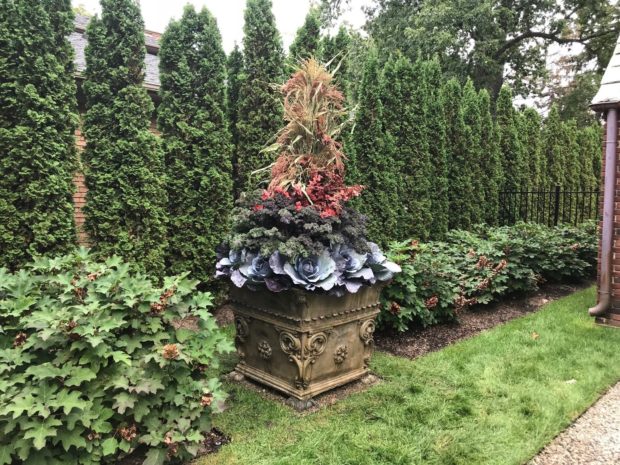 I am always grateful for the chance to fill large pots, no matter the season. This fall container stands out in the landscape. Soon the foliage on “Ruby Slippers” oakleaf hydrangeas will color up a deep wine red. This part of my clients’ landscape will shine once our temperatures drop.
I am always grateful for the chance to fill large pots, no matter the season. This fall container stands out in the landscape. Soon the foliage on “Ruby Slippers” oakleaf hydrangeas will color up a deep wine red. This part of my clients’ landscape will shine once our temperatures drop.
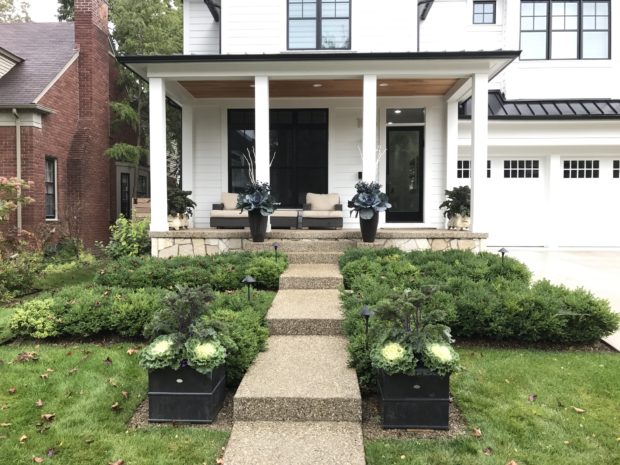 Fall container plantings can represent any aesthetic. This fall planting is very trim, and simple.
Fall container plantings can represent any aesthetic. This fall planting is very trim, and simple.
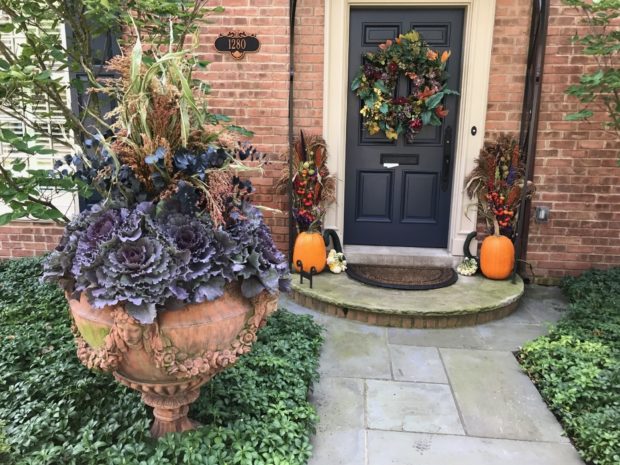 This fall container planting is exuberant.
This fall container planting is exuberant.
 This Belgian stoneware container is planted for fall in an architectural, rather than a traditional way.
This Belgian stoneware container is planted for fall in an architectural, rather than a traditional way.
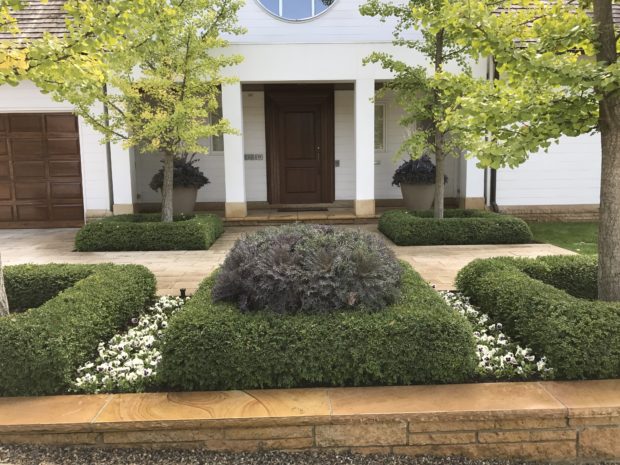 Gardeners of very different persuasions represent their gardens for fall in very different ways. I applaud this. It makes the landscape all the more interesting.
Gardeners of very different persuasions represent their gardens for fall in very different ways. I applaud this. It makes the landscape all the more interesting.
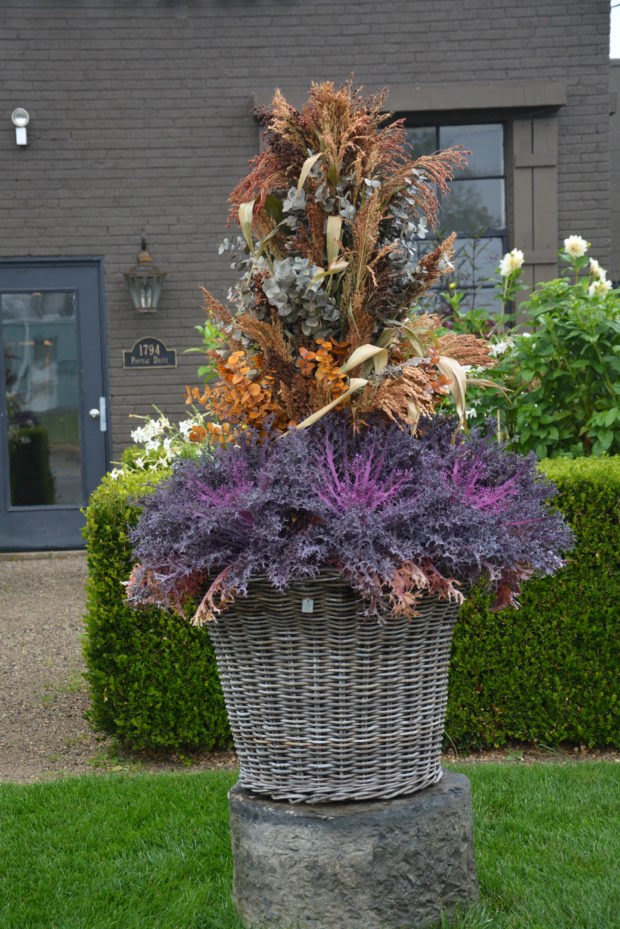 Of course we plant pots for fall at the shop.
Of course we plant pots for fall at the shop.
 Those shop plantings frequently have some fall fruits selected by Rob to accompany them.
Those shop plantings frequently have some fall fruits selected by Rob to accompany them.
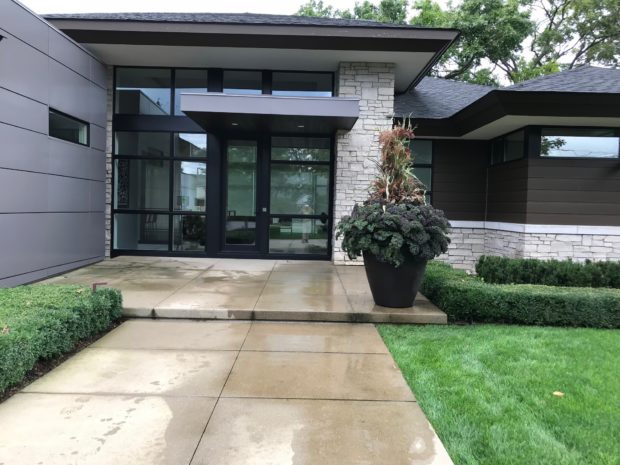 fall planting with broom corn and redbor kale
fall planting with broom corn and redbor kale
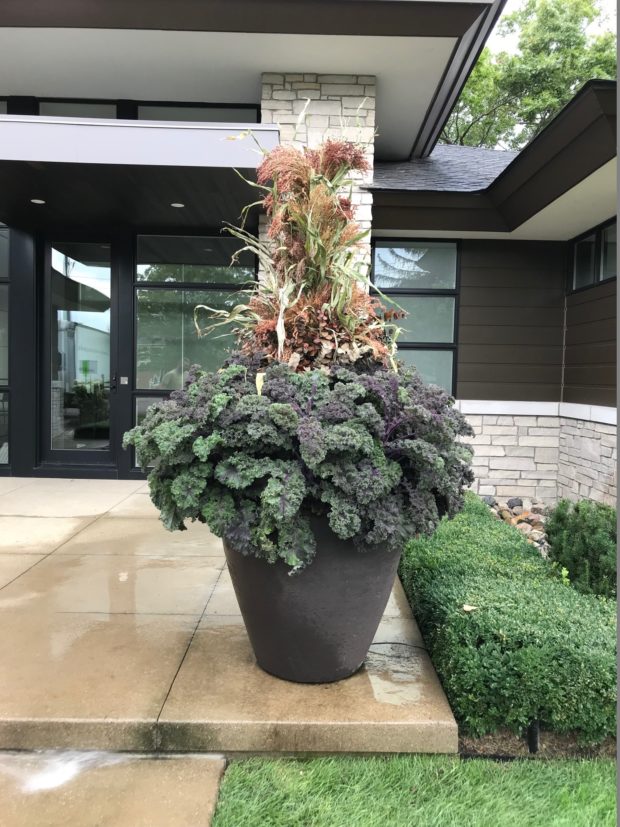 As the nights cool, this kale will turn a dark rich purple.
As the nights cool, this kale will turn a dark rich purple.
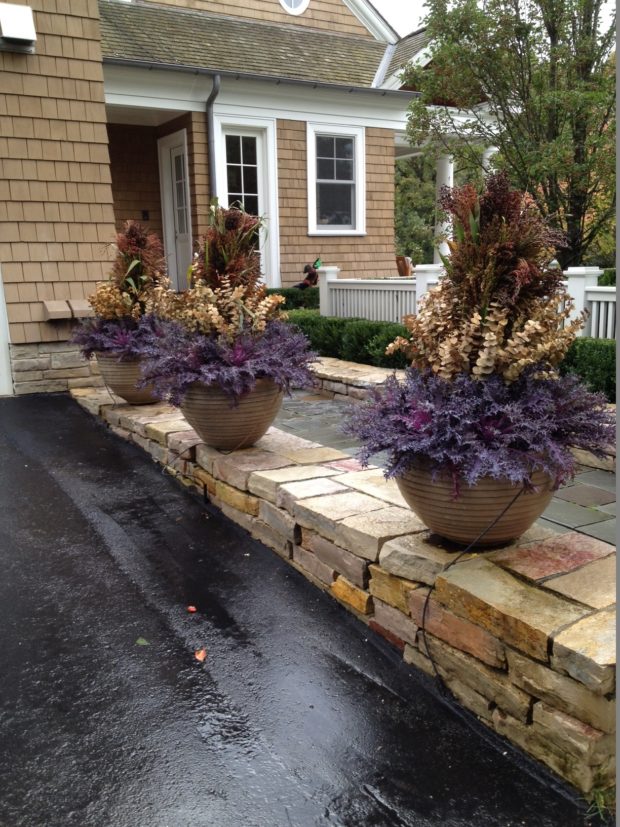 trio of fall pots featuring coral queen cabbage.
trio of fall pots featuring coral queen cabbage.
 These containers are at their English border style best at the end of summer. The obelisks from Branch lend structure to the planting.
These containers are at their English border style best at the end of summer. The obelisks from Branch lend structure to the planting.
 Changing out containers one season to the next is a satisfying way to spend time in the garden.
Changing out containers one season to the next is a satisfying way to spend time in the garden.
 Planting containers for fall is a way to celebrate the beauty of the season.
Planting containers for fall is a way to celebrate the beauty of the season.
Save

